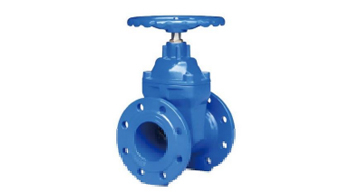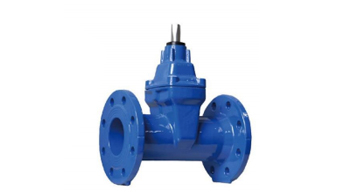Company News
CONTACT
- Tongling Wusong Valve Co.,Ltd
- Address:No.3636,Qifeng Road,Shizishan Economic Zone,Tongling,Anhui,China
- Tel:0086 0562-2826399
- Fax:0086 0562-2826899
- Domain:
Talk about common assembly methods of valve
Update:2019-05-15 From:Tongling Wusong Valve Co.,Ltd
The entire machine is the basic unit of the valve assembly, and several components make up the valve assembly (e.g., bonnet, disc member, etc.). The assembly process of several parts is called component assembly, and the assembly process of several parts and components that make up a valve is called the total assembly. Assembly work has a great influence on product quality. Even if the design is accurate and the parts are qualified, if the components are not suitable, the valve will not meet the requirements and even leak the seal. Therefore, special attention should be paid to the fair assembly method to ensure the final quality of the valve. The assembly process defined in documented form during production is called the assembly process specification.
There are three common assembly methods for valves, the complete exchange method, the repair method, and the matching method.
1. Complete exchange method
When the valve is assembled in a fully interchangeable manner, each part of the valve can be assembled without any trimming or selection, and the assembled product can meet specified technical requirements. At this time, valve parts must be processed according to the design requirements, with satisfactory dimensional accuracy and geometric tolerance requirements. The advantages of the complete exchange method are that the assembly work is simple and economical, workers do not need high technology, the assembly process is highly efficient and the assembly process is easy. Line and organization professional production. However, in an absolute sense, high machining accuracy is required when a complete replacement component is used. It is used for globe valves, check valves, ball valves, and small and medium diameter valves.
2 alternative methods
Valves are assembled by matching method. The machine can be machined with economical precision. When assembling, another dimension with adjustment and compensation effect can be selected to achieve the specified assembly accuracy. The principle of matching method is the same as the repair method, but the method of changing the size of compensation ring is different. The former USES the method of selecting accessories to change the size of the compensation ring, and the latter changes the size of the compensation ring by dressing the accessories. For example, the top core and adjustment washer of the control valve type double gate wedge gate valve, and the adjustment washer between the sides of the ball valve, were selected as special compensation components in the dimension chain related to assembly accuracy. Adjust the thickness of the washer to the desired assembly accuracy. To ensure that fixed compensation components can be selected in different situations, it is necessary to pre-fabricate a set of gaskets and casing compensation components for assembling hydraulic control valve models of different thicknesses.
3. Repair methods
The valve is assembled by repairing method, and the parts can be processed with economic precision. The size and remedial measures of the junction are suitable for achieving the specified assembly objectives. For example, wedge-type gate valves and bodies are repaired by most manufacturers due to the high processing costs required to implement the switch. That is to say, when the final opening of the sealing surface of the control gate, the opening size of the valve body sealing surface should match with the opening size of the valve body sealing surface to achieve the final sealing requirements. Although this method increases the plate-making process, it greatly simplifies the dimensional accuracy requirements of previous processing steps, and the skilled technicians in the plate-making process operate skillfully without affecting production efficiency in general. Valve assembly process: valves are individually assembled in a fixed area. Valve parts, assembly and general assembly are performed in the assembly shop and the required parts and components are transported to the assembly site. In general, the assembly of the components and the total components are determined by how many groups of workers are executed at the same time, which shortens the assembly cycle and facilitates the application of special assembly tools, and requires relatively low skill levels of the workers.
Some foreign manufacturers or high - tech valves also use the assembly line or assembly turntable way.
Preparation before assembly
Valve parts must be removed from machining burr and solder residue, cleaning and cutting packing and gaskets prior to assembly. Clean valve parts
Since the valve is installed as a fluid line, the cavity must be clean. Especially for nuclear power, medicine, food industry valves, in order to ensure the purity of medium and avoid secondary infection, the valve cavity cleanliness requirements are more stringent. Clean the valve parts and clean the chips, remaining smooth oil, coolant and burr, welding slag and other dirt on the parts prior to assembly. Valve cleaning is usually done with alkaline or hot water (also kerosene) or ultrasonic cleaners. After the parts are ground and polished, they need to be cleaned finally. The final cleaning is usually done by cleaning the sealed surface with gasoline, then drying it with close air and wiping it with a cloth.
Packing and gasket preparation
Graphite packing is widely used because of its corrosion resistance, good sealing and low friction coefficient. Packing and gaskets are used to prevent media leakage through stem and bonnet and flange connection surfaces. These parts must be ready for cutting and receiving prior to valve assembly.
4 valve components
Valves are usually assembled in the sequence and method specified in the process, using the valve body as a reference part. Parts and parts shall be inspected prior to assembly to avoid unburring and uncleaning of parts. During the matching process during loading, parts should be handled lightly to avoid collision and scratch of machining personnel. The moving parts of the valve (such as stem, bearing, etc.) should be coated with industrial butter. Body and body flanges are mostly bolted. When tightening bolts, rivets are called interlacing, repeating, and tightening evenly. Otherwise, the connecting surface of the body and bonnet will be controlled by the flow of the surrounding forces. Leaks. The hand used for fastening should not be too long to prevent excessive pretightening force and affect bolt strength. For valves requiring strict pre-tightening, torque should be applied and bolts tightened to the specified torque requirements. After final assembly, the retaining mechanism should be rotated to check whether the movement of the valve opening and closing members is operable and whether there is any paper jam. Assembly orientation of bonnet, bracket and other parts of reducing valve meet drawing requirements and can be tested after inspection of valve.
 中文
中文 English
English



